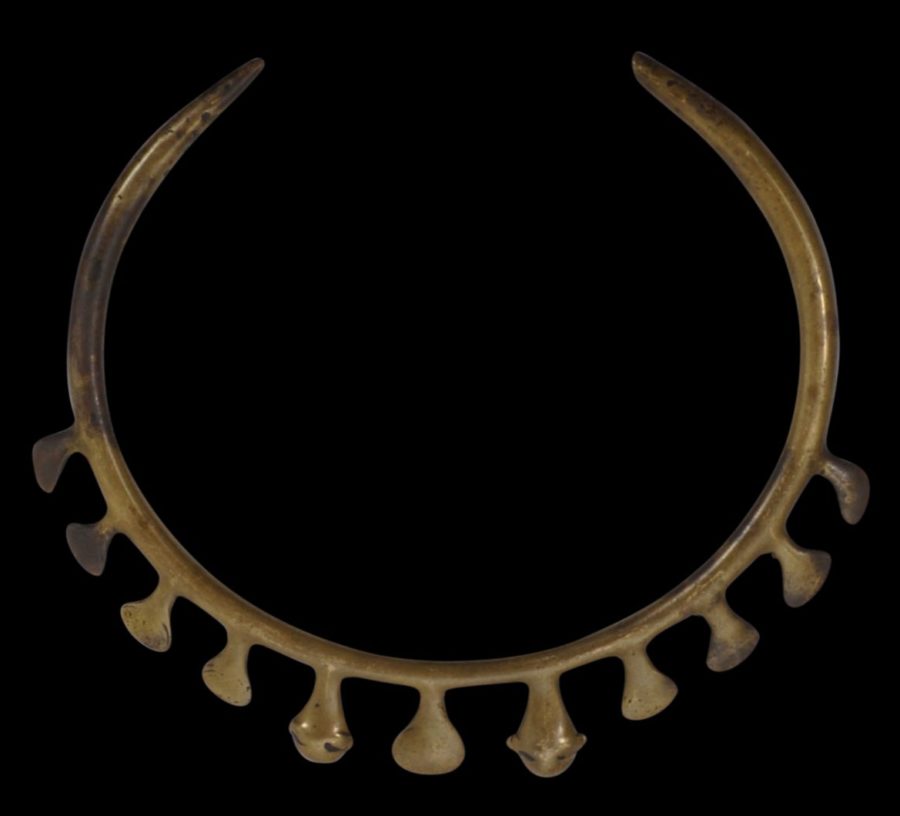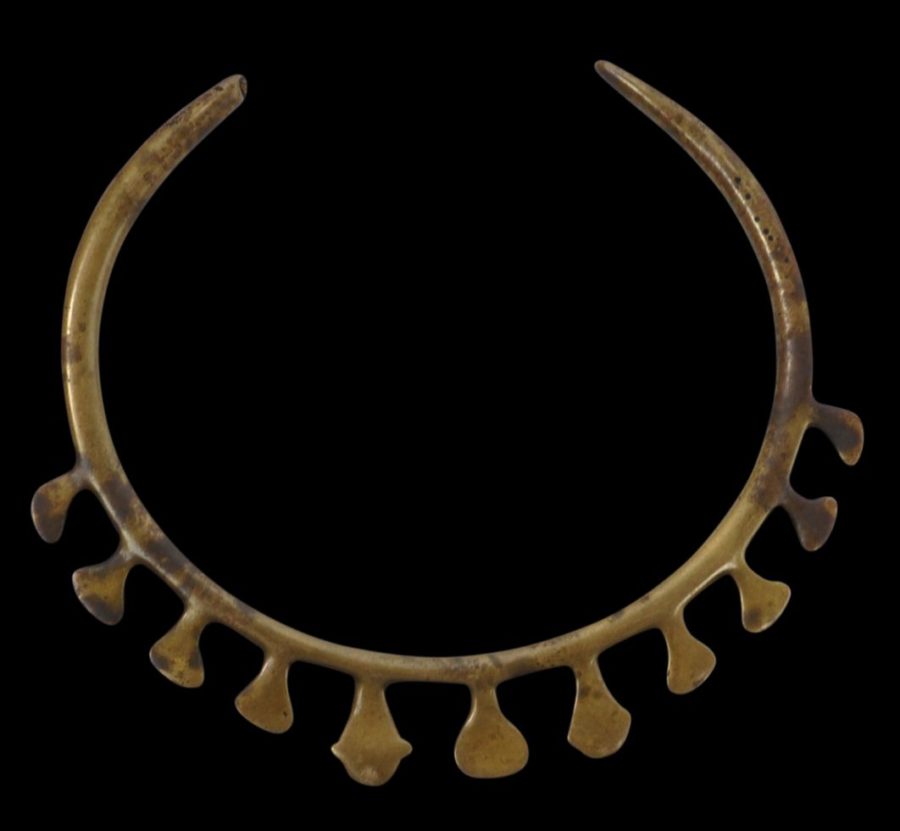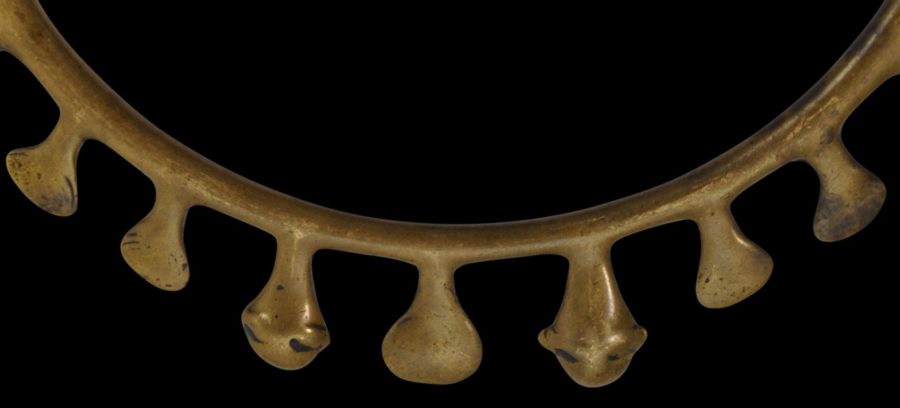Enquiry about object: 6249
Naga Warrior’s Brass Neck Torque
Naga People, Eastern India/Western Burma 18th-19th century
width: 16.5cm, weight: 135g
Provenance
private collection, London.
Brass torques or necklaces like this example were cast in one piece and were worn by Naga warriors as prestige items. It is believed that such torques were worn not only by warriors who could afford them but also by those who had taken heads, and were commissioned specifically from plains brass casters to commemorate their head-taking prowess.
The example here has been cast with thickened ends and has eleven protuberances, two of which were in the form of human heads. The torque has incredible wear from handling and age. It is now barely possible to discern the details of the heads. The fact that two heads are shown suggests that the owner had the torque made to commemorate two trophy heads taken in a raid by the owner (Untracht (1997, p. 64).)
The wear on this piece is important. It has made the torque particularly attractive and decorative – almost as if it is melted chocolate. But importantly, there are reproductions of such toques and it is clear from the wear on this example just how genuine it is. Not only that, and given that such pieces might have been heirloom pieces, it is entirely possible that it dates to the 18th century.
Related examples are illustrated in Barbier (1984, p. 38), Untracht (1997, p. 64) and Jacobs (1990, p. 259).
This is a splendid piece given its patina and wear.

Above: A Naga warrior wearing a similar torque to the one here.
The Naga people are concentrated in Eastern India. Smaller numbers are also in western Burma. The Naga themselves are divided into at least 15 major ethnic subgroups: the Angami, Ao, Chakhesang, Chang, Khiamniungan, Konyak, Lotha, Phom, Pochury, Rengma, Sangtam, Sümi, Tikhir, Yimkhiung, and the Zeme-Liangmai (Zeliang). They speak as many as 30 sometimes mutually unintelligible dialects. Traditionally, they were animists. Each group had their own ceremonial attire.
The area in India where the Nagas, who are believed to be of Mongolian descent, are concentrated was recognised as its own state, Nagaland, in 1977. It is a relatively remote, mountainous and landlocked region, but it was not remote from trade. The Nagas largely were farmers but general trade also was another economic activity, one in which both women and men participated. Costume and ornament making were a significant commercial activity. Some Naga tribes made no ornaments at all but instead bought them from other tribes.
The Naga appreciated imported glass beads and seashell components greatly for their jewellery and other adornment. Typically, the seashells were traded in from the Bay of Bengal. The beads came from India, and also much further afield such as Venice. Metal elements were also used. These were cast locally or imported, mostly from India. The Nagas traditionally were head hunters, and the jewellery of the menfolk reflected the preoccupation with ancestor worship and one’s prowess at hunting and taking heads.
Jewellery items were highly prized and were treated as heirlooms to be passed from family member to family member. Components of necklaces such as individual beads were prized just as much as overall jewellery pieces, and so often beads and other jewellery components would be used and re-used. Jewellery items would be amended and remade according to need and as a family’s wealth and prestige grew. But by the 1970s, the Nagas no longer wore much traditional jewellery and jewellery making for traditional purposes largely stopped. Most Nagas had also converted to Christianity (Baptist mostly), and the taking of heads had long stopped, having been largely supressed by the British in the early 20th century. As with any evolving society, heirloom pieces were traded for items that improved a family’s well-being – medicines, household appliances and so on.
References
Barbier, J.P., Art of Nagaland: The Barbier-Muller Collection Geneva, Los Angeles County Museum of Art, 1984.
Jacobs, J., The Nagas: Hill Peoples of Northeast India, Thames & Hudson, 1990.
Shilu, A., Naga Tribal Adornment: Signatures of Status and Self, The Bead Museum, Washington, 2003.
Untracht, O., Traditional Jewelry of India, Thames & Hudson, 1997.




